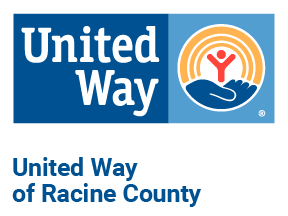Racine Keeps Philanthropy Engaging
By Ali Haigh, President and CEO of United Way of Racine County
 Mar. 29, 2020—Our world is rapidly changing, and philanthropy is no exception. Digital giving methods are gaining traction. Individuals seek increased accountability and involvement with their chosen nonprofits. Donations have increased each year since 2013—but not equally. While foundations, corporations, and wealthy households are giving more, gifts from median- and low-income households are shrinking. These changes present a challenge to nonprofits everywhere, but in Racine County, we are well-positioned to adapt by developing a stronger philanthropic culture.
Mar. 29, 2020—Our world is rapidly changing, and philanthropy is no exception. Digital giving methods are gaining traction. Individuals seek increased accountability and involvement with their chosen nonprofits. Donations have increased each year since 2013—but not equally. While foundations, corporations, and wealthy households are giving more, gifts from median- and low-income households are shrinking. These changes present a challenge to nonprofits everywhere, but in Racine County, we are well-positioned to adapt by developing a stronger philanthropic culture.
Here’s why Racine has the potential to overcome households’ decline in support for nonprofits. In a study by WalletHub, Wisconsin’s population rates 17 out of all states for its inclination to charity. In my experience, this supportive mindset holds true for Racine, where I meet no end of generous people who collaborate to improve their community. Racine is experiencing the top income growth of all counties in the nation, which results in incredible turnout for campaigns and volunteer events every year and places us in an excellent position for charitable momentum.
Racine’s community-minded corporations are another asset to local philanthropy that bolsters individuals’ drive for charity. Our county hosts many prominent businesses, like Modine, Twin Disc, Andis and InSinkErator, which cultivate a philanthropic culture. Local companies of all sizes support nonprofits by incentivizing employees to donate, encouraging staff to volunteer, and matching employee gifts. It’s reassuring that while corporate gifts gain strength nationally, local nonprofits can rely on the support of our community’s businesses to advance their missions.
Nonetheless, nonprofits work increasingly hard to earn supporters’ loyalty. As the nonprofit sector expands, and the internet enables people to observe more entities’ work, we have seen a correlation both locally and nationally that the most successful nonprofits demonstrate clear impact and routinely engage supporters through volunteer opportunities and digital philanthropy.
Nationally, about one in four adults volunteer. In Wisconsin, it’s closer to one in three; our state boasts the nation’s fourth highest volunteer rate. This is influential to Racine’s philanthropic culture. When individuals directly contribute to change, not only do they observe proven impact, but they gain more ownership for and loyalty to the work of the nonprofits they serve. I’ve seen this impact firsthand in my work for United Way. Since 2013, when I began guiding United Way of Racine County’s transition to engagement-based fundraising that relied on volunteering and detailed impact reporting, our volunteer base has increased by more than 50%.
In addition to volunteerism, digital philanthropy is an attractive element to donors. While giving grew 4.1% overall in 2019, digital gifts increased at 12.1%, triple the speed, and mobile transactions grew even faster. Most donors now prefer to give online—even when factoring for generation. This makes the internet a powerful way to demonstrate impact and mobilize supporters. United Way is incorporating more digital giving opportunities, like #GivingTuesday, Do More 24, and mobile giving, to reflect this shift, and I’m sure our county will only see more development like this in the coming years.
I’m eager to see how nonprofits influence our community as the philanthropic landscape evolves. United Way of Racine County’s work has made waves; we are now one of the top community impact United Ways in the nation, in the top ten percent of United Ways for per capita giving, and a national leader in fundraising. If we can continue to implement engagement strategies in more local nonprofits, our community will only grow and thrive more and more. The increasing engagement that drives nonprofits’ success today is exactly the mechanism we need to breach our community divides, to fulfill not just our neighbors’ basic needs but also their needs for belonging, devotion to a cause, and contribution to a greater whole.
This column was originally published in the Racine Journal Times.

Website by: OneEach Technologies
Sitemap | Login